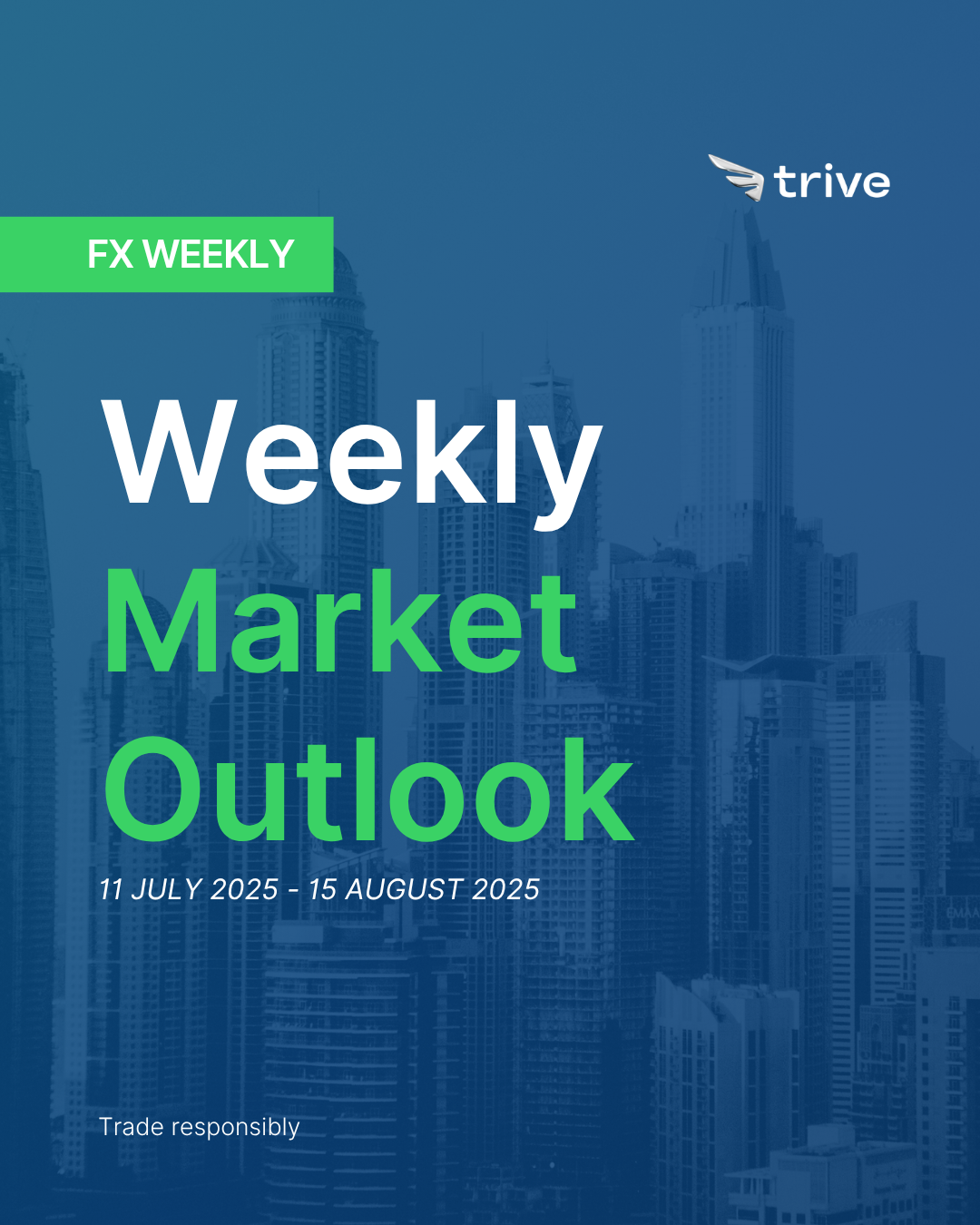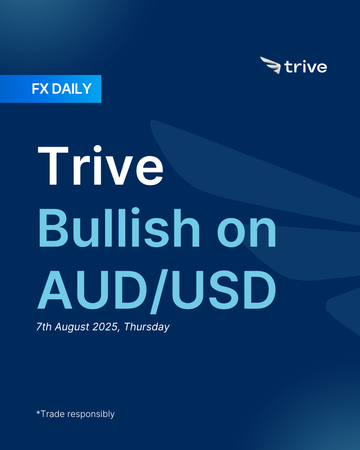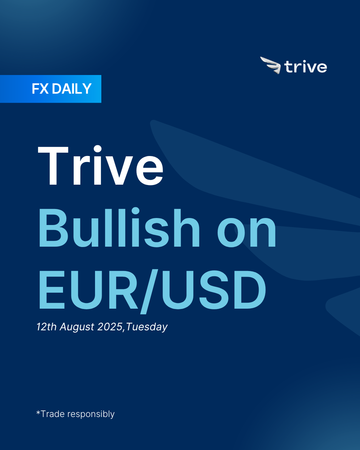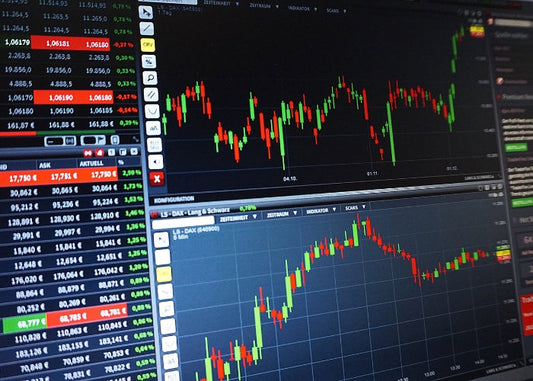FX Weekly: Trive’s Week Ahead Views

This week highlights include US CPI and Retail Sales data, China Inflation and Activity Data, RBA, Aussie Jobs, UK Jobs & GDP, Potential Trump-Putin Meeting and the US/China Truce Deadline
Monday
Markets begin the week on a muted note, with Japan closed for the Mountain Day holiday. The only major release comes from Norway, where July CPI will be closely watched following Norges Bank’s surprise cut at the previous meeting. June’s CPI-ATE printed slightly above consensus but aligned with the central bank’s own 3.1% forecast. July’s print, expected at 3.0%, could shape near-term expectations for a follow-up cut as soon as September. Given dovish tilt in recent commentary and signs of labour market cooling, a miss on CPI could cement expectations for further easing in Q4.
Tuesday
A packed Tuesday session will be dominated by central bank decisions, inflation data, and trade policy. In Australia, the RBA is widely expected to cut the Cash Rate by 25bps to 3.60%, with markets pricing this scenario at 98% probability. The case for a cut has solidified following weak jobs data—unemployment rose to a 3.5-year high at 4.3%—and slowing Q2 inflation. RBA Governor Bullock has acknowledged the path toward easing, and the July pause was framed as a cautionary move pending more data. Tuesday’s cut would mark a clear shift toward a dovish bias, even if further easing remains conditional on continued disinflation.
Across the Tasman, the UK’s labour market report is expected to show the unemployment rate holding at 4.7%, with ex-bonus earnings growth steady at 5.0%. However, downward revisions to payrolls in prior months and the recent MPC vote split at the BoE suggest markets may discount the data unless a significant deterioration is seen. Economists at Pantheon expect June’s payroll loss to be revised to -8k and July’s at -7k, reinforcing the narrative of a stabilising—yet looser—labour market. Any upside surprise on wages could temper rate cut pricing, which remains cautious with no full 25bps cut priced until February 2026.
German ZEW expectations for August and the US EIA STEO report will also be in focus, but the centerpiece macro risk lies with the US CPI and the US-China tariff truce deadline. July CPI is expected at +0.2% M/M and 2.8% Y/Y (prev. 2.7%), while core is seen rising to +0.3% M/M and 3.0% Y/Y (prev. 2.9%). Analysts, including Wells Fargo, anticipate signs that tariffs are starting to lift consumer prices. However, consumer fatigue and sticky core components mean inflation may grind, not spike, higher. The Fed remains in "wait-and-see" mode, with dovish leanings creeping in after the recent NFP disappointment and remarks from Daly suggesting the Fed "cannot wait forever".
Meanwhile, the US-China tariff truce, set to expire August 12, is expected to be extended by 90 days, though no formal White House announcement has followed China’s confirmation. Trump’s simultaneous rollout of new tariffs—including an additional 25% penalty on India’s Russian oil imports—has heightened the risk of escalation. Markets will react to any sign that the extension fails, raising the specter of a return to tit-for-tat tariffs that previously reached 145% (US) and 125% (China).
OPEC will release its Monthly Oil Market Report (MOMR), while traders digest the likely output implications from Sunday’s OPEC+ meeting. Early reports suggest a September hike of 548k BPD or less, aligning with the group’s path to unwind the remaining 2.2mln BPD cut by year-end.
Wednesday
Midweek brings final inflation prints from Germany and Spain. Germany’s July CPI is expected to confirm the preliminary estimate of 2.5% Y/Y, while Spain’s figure should hold at 2.3% Y/Y. The data will likely reinforce the ECB’s dovish tilt after recent commentary suggested inflation is converging toward target. Markets are unlikely to react unless there are significant revisions.
Thursday
Focus shifts sharply back to central banks, growth, and jobs. Norges Bank is expected to hold at 4.25% after cutting rates unexpectedly in June. Policymakers cited faster-than-expected declines in core inflation and a cooler growth outlook. July CPI-ATE, expected at 3.0%, will be key—any undershoot could pull forward expectations for a September cut. SEB and Danske Bank both forecast additional cuts before year-end.
In Australia, July labour data could reinforce the RBA’s dovish bias post-rate cut. The prior month’s report was weak, with only 2k jobs added and the jobless rate rising to 4.3%. Markets will look for confirmation of soft hiring trends and rising slack in the labour market.
In the UK, GDP for June is expected to rise +0.1% M/M (prev. -0.1%), while Q2 growth slows to +0.1% Q/Q (prev. +0.7%). Analysts at Investec see scope for an upside surprise, penciling in +0.3% M/M on the back of manufacturing resilience and service sector growth. A stronger GDP print could ease concerns over the UK's fiscal "black hole" but is unlikely to alter the BoE’s inflation-focused stance.
The Swedish CPIF for July will also be released, alongside Eurozone flash GDP and employment figures. EZ Q2 GDP is expected to show subdued growth as momentum remains tepid. These figures follow disinflationary signals in the bloc and will be closely parsed for clues on how long the ECB can hold rates at current levels.
In the US, July PPI is forecast at +0.2% M/M and +2.4% Y/Y, with the core PPI seen cooling to 2.0% Y/Y from 2.2%. The data will be evaluated in tandem with CPI and retail sales as markets look for confirmation that inflation is not reaccelerating amid tariff impacts.
Friday
Asia kicks off with a full slate of top-tier data. Japan’s Q2 GDP is expected to contract by -0.7% Y/Y (prev. +2.2%) as export weakness and inventory drawdowns weigh, offset partially by gains in private consumption and services. June Industrial Production is seen rebounding +1.7% (prev. -0.1%). Although the BoJ remains on hold at 0.50%, Governor Ueda noted downside tariff risks at the last meeting while also reiterating that 2% inflation is "closer than before." Confirmation of a non-stacking US-Japan tariff arrangement last week helped reduce confusion but left forward risks intact.
China’s July activity data is also due, though expectations remain low. ING sees industrial production slowing to ~6.2% Y/Y (prev. 6.5%), retail sales easing to 4.6% Y/Y, and fixed asset investment holding near 2.8% Y/Y. Weak private investment and fading trade-in stimulus continue to cap upside. Markets may discount the data if the US-China tariff truce is formally extended, but any sign of a breakdown could bring trade tensions roaring back.
In the US, July retail sales headline is expected at +0.5% M/M (prev. +0.6%), with the ex-autos print forecast at +0.2% (prev. +0.5%). Pantheon Macroeconomics warns that June’s upside surprise was driven by autos and inflation, not real volume, and sees Q3 consumption growing below 1%. Combined with last week’s weaker-than-expected jobs report, Friday’s numbers could sharpen expectations for a Fed rate cut in September if consumption shows further signs of stagnation.
Markets will also monitor the University of Michigan preliminary consumer sentiment index for August. Given consumer sensitivity to inflation and tariff news, the survey may show a notable shift in expectations.
Finally, geopolitical risk looms over the tape with the potential Trump–Putin summit. While the Kremlin has confirmed talks "in the coming days," the US has yet to formally commit. Discussions are expected to focus on a Ukraine ceasefire, though Putin has dismissed any trilateral summit with Zelensky, saying conditions are "far from met." The meeting comes as Trump threatens fresh sanctions unless Moscow shows progress, with markets watching closely for confirmation of timing and substance. A credible deal could ease geopolitical risk premia—especially in energy and FX—while failure or delay could bring renewed sanctions, including secondaries, with broader implications for China, India, and energy markets.
Disclaimer
This material is provided for informational purposes only and does not constitute financial, investment, or other advice. The opinions expressed in this material are those of the author and do not necessarily reflect the views of Trive International. No opinion contained in this material constitutes a recommendation by Trive International or its author regarding any particular investment, transaction, or investment strategy. This material should not be relied upon in making any investment decision.
The information provided does not consider the individual investment objectives, financial situation, or needs of any specific investor. Investors should seek independent financial advice tailored to their individual circumstances before making any investment decisions. Trive International shall not be liable for any loss, damage, or injury arising directly or indirectly from the use of this information or from any action or decision taken as a result of using this material.
Trive International may or may not have a financial interest in the companies or securities mentioned. The value of investments may fluctuate, and investors may not get back the amount they originally invested. Past performance is not indicative of future results.
For more information about Trive International, please visit http://trive.com/int
Additional Information
Investing involves risk, including the potential loss of principal. Diversification and asset allocation strategies do not ensure a profit or guarantee against loss. The content in this material is subject to change without notice and may become outdated or inaccurate over time. Trive International does not undertake any obligation to update the information in this material.
By accessing this material, you acknowledge and agree to the terms of this disclaimer. If you do not agree with these terms, please refrain from using this information.
कोई टिप्पणी नहीं
Home
Trive
TriveHub





0 टिप्पणियाँ